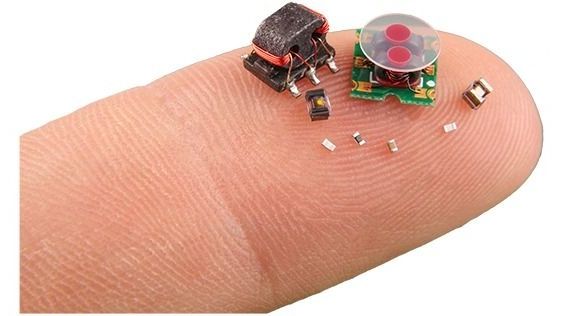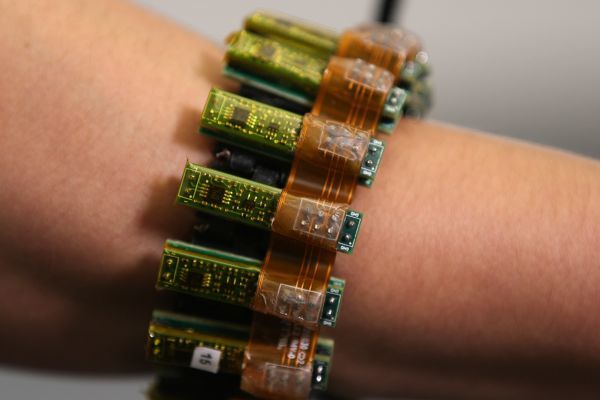Co-founder of Google DeepMind and CEO of SpaceX amongst the 2,400 signatories of pledge to block lethal autonomous weapons.
Ian Sample Science editor.

Co-founder of Google DeepMind and CEO of SpaceX amongst the 2,400 signatories of pledge to block lethal autonomous weapons.
Ian Sample Science editor.
Google researchers, in collaboration with the Max Planck Institute of Neurobiology, have developed a neural network that maps neurons inside the brain more accurately than previous methods.
An artificial neural network that’s made entirely from DNA and mimics the way the brain works has been created by scientists in the lab.
The test tube artificial intelligence can solve a classic machine learning problem by correctly identifying handwritten numbers.
The work is a significant step in demonstrating the ability to program AI into man-made organic circuits, scientists claim.

Imagine a natural disaster scenario, such as an earthquake, that inflicts widespread damage to buildings and structures, critical utilities and infrastructure, and threatens human safety. Having the ability to navigate the rubble and enter highly unstable areas could prove invaluable to saving lives or detecting additional hazards among the wreckage. Partnering rescue personnel with robots to evaluate high-risk scenarios and environments can help increase the likelihood of successful search and recovery efforts, or other critical tasks while minimizing the threat to human teams.
“Whether in a natural disaster scenario, a search and rescue mission, a hazardous environment, or other critical relief situation, robots have the potential to provide much needed aide and support,” said Dr. Ronald Polcawich, a DARPA program manager in the Microsystems Technology Office (MTO). “However, there are a number of environments that are inaccessible for larger robotic platforms. Smaller robotics systems could provide significant aide, but shrinking down these platforms requires significant advancement of the underlying technology.”
Technological advances in microelectromechanical systems (MEMS), additive manufacturing, piezoelectric actuators, and low-power sensors have allowed researchers to expand into the realm of micro-to-milli robotics. However, due to the technical obstacles experienced as the technology shrinks, these platforms lack the power, navigation, and control to accomplish complex tasks proficiently.

The brain is about 10% neurons and 90% neural network support cells, called neuroglia, or glial cells, which surround and insulate neurons, protect them from damage, and supply them with nutrients and oxygen. Neuroglia are often found to malfunction in neurological disorders such as Alzheimer’s Disease or amyotrophic lateral sclerosis (ALS).
Research studies indicate that telomerase gene therapy may not only reverse Alzheimer’s Disease and other dementias, but it may even protect people from developing such diseases.
This is indeed hopeful news for the nearly 50 million victims of Alzheimer’s or related dementia worldwide as well as for the millions of aging people with Parkinson’s and aging-related mental decline.
Telomerase gene therapy appears to rejuvenate microglial (the immune cells of the brain) cells in Alzheimer’s Disease according to promising research study data.

What we need to do, to prevent global wealth inequality and advanced technology from adding up to produce global catastrophe, is increase equitability of opportunity. We need to enable everyone in the world to have the opportunity to really play the modern global economic-social game.
AI scientist BEN GOERTZEL believes that advanced technologies will change the world and transform our species in the process — unless tragedy strikes. Here’s how we ought to save the world if it does …
Full automation of things like Logging, and Mining is not that far off. A humanoid robot that can do all the tasks of those sorts of jobs is already really close, the main issue right now is copying Human Hands, and it is almost there. Then, having vehicles like this to haul the stuff out of there. And, then those jobs are gone for good.
It might not be the quickest vehicle at the event, but Swedish transport company Einride has chosen the Goodwood Festival of Speed to reveal the T-log, an autonomous, electric logging truck. Incorporating some unusual purpose-built design for the niche logging market, the vehicle is designed to go off-road and to navigate forest roads with and without loads.

CTRL-labs’s noninvasive neural interface allows people to control computers, robots and applications by tracking electrical activity generated when a person thinks about moving. This electrical activity is detected by an armband outfitted with sensors and decoded by a computer. The team thinks the technology will initially be used for augmented and virtual reality, but CTRL-labs is already experimenting with medical applications.
Want a hint of how the automotive zeitgeist is changing? You only need to look at the just-ended Goodwood Festival of Speed. Roborace has carved out a small niche in history with the first self-driving vehicle to successfully complete Goodwood’s famous hill climb, where vehicles have to tackle a gradual 300-foot ascent that includes narrow hay- and brick-lined passages. It wasn’t a flat-out assault, but the attempt (which was preceded by a practice run) went off without a hitch — which you can’t say for the other autonomous contender at the festival.
Siemens had prepared an autonomous Ford Mustang that carried none other than the festival’s founder, the Duke of Richmond, through the run. Technically, it did complete the run — but only with help from a safety driver, who had to repeatedly take over as the modified coupe threatened to plow into hay bales. This came despite Siemens’ team having 3D-mapped the course and plotted the route in advance.
Human drivers don’t have anything to worry about yet in either case. The Roborace vehicle was not only cautious, but tended to make constant corrections that are clearly visible in the video below. Even so, it’s good to know that a completely driverless race car isn’t intimidated by an elevation change. We just can’t help but imagine Goodwood guests feeling nervous — the festival might have less reason to exist if many future cars won’t need a human pilot.